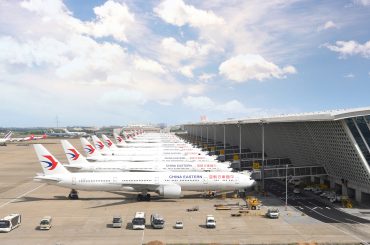Zip Air Tokyo will launch in May with 787-8s formerly used by parent owner Japan Airlines.
Zip Air will have an initial fleet of two, and in the near future will add one aircraft per year, but has not finalised where the aircraft will come from.
Taking ex-JAL aircraft for a launch fleet was considered alongside tapping JAL’s order book for new aircraft. The timing was favourable for the JAL group since JAL’s older 787s were going into the hangar for a major interior update.
But future aircraft source options are not as easy. JAL aims to complete work on its -8s by the end of the financial year in March, so there are no outdated aircraft that are clear candidates to be transferred to Zip.
As for new aircraft, JAL no longer has long-term orders for Boeing widebodies.
Zip president Shingo Nishida said at the Singapore Airshow that economic and aircraft trends, as well as group-level strategy, will likely dictate source decisions for Zip’s fleet.
“It really depends on the market,” Nishida said. “Because we are under JAL group, it also depends on the JAL group’s fleet strategy. As a group, we will think overall, then decide how to increase aircraft.”
Zip’s inaugural aircraft, JA825J, first flew in 2012 and is 787 line number 33. It has been flying between Tokyo Narita and Seoul Incheon this month on preparation flights.
With the exception of three leased 787-9s, JAL owns all of its widebodies, including 787-8s. JAL had 28 -8s at the end of last year.
Instead of retrofitting in a new JAL interior, JA825J was put in Zip’s configuration. The largest gain was made in density, with Zip boosting seat count to 290, 50% more than on JAL. Galleys were reduced from four to three, Nishida said.
Forgoing embedded IFE saved approximately a half tonne of weight while seats are 29% lighter per passenger. Zip boasts it is the first LCC with washlets but these appear inherited from the JAL configuration.
Group capital for new aircraft was allocated to JAL, which has predictable financial results compared to the start-up nature of Zip.
There is precedent for this: Scoot launched with 777-200s from parent owner Singapore Airlines. After demonstrating viability, Scoot inherited SIA’s early 787 delivery positions.
Unlike most airlines, cash is not a problem for the JAL group. Its mid-term management plan set aside JPY50 billion (US$455m) for extraordinary growth. Zip comprises just under half at JPY23 billion ($209m). The remaining capital is unallocated.










